Provide me some basic information about you and your business,
I'll review your details and get right back to you.
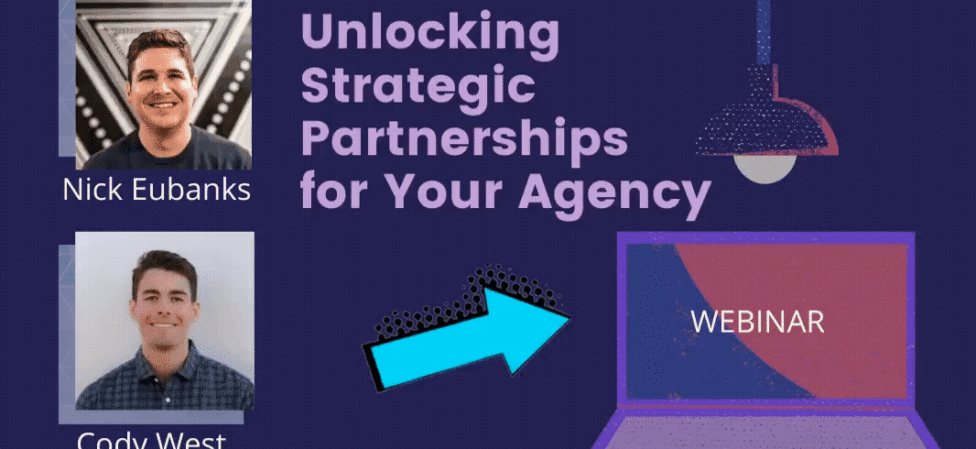
Anyone with sales experience already understands how valuable strategic partnerships can be to drive growth.
For the rest of us, it may not be as obvious just how much revenue can be generated, consistently (read; predictably) from building an intentional, formalized partner ecosystem.
So I’m going to walk you through it.
Strategic partnerships accounted for nearly ~30% of my agencies top-line revenue in 2019.
This represents millions of dollars in growth that we would have missed out on had I not invested in finding, testing, and optimizing these partnerships.
Better still, it gives you an opportunity to scale specific parts of your agency. For us in 2020, this meant doing an analysis of all our client-dollars from 2019 to understand which areas could grow faster leveraging strategic partners.
There are dozens of different ways you can partner with all types of companies, but here are the most frequent types of partnerships for digital agencies;
Our data showed that ~30% of top-line revenue came from outreach (or digital PR as it’s now more often referred to), enough so that it made sense fo us to spin the service out as it’s own brand, and for me to go to work looking for strategic partners.
What could I take away from the analysis to offer as value to a potential partner?

Since 70% of FTF clients are currently running active link building campaigns, I went looking for a partner that could:
FTF has a B2B SaaS client who we have identified needs to launch an aggressive link building campaign to have any hopes of catching up to their 3 main competitors in organic search.
The most common Client questions about link building:
Enter The Link Intelligence Report from Assisted Reach.
This deliverable, which we are able to white-label directly, provides an objective (data-driven) answer to all of these questions.
It allows us to focus on selling more of what we do best (Outreach as a Service) and less on trying to convince the Client that they should be doing this.
In short, it gives us a polished, reliable fast-forward button for setting expectations and driving results.
First, you need to focus on operationalizing your partnerships.
Make commitments that establish Trust.Focus on the marriage between demand and fulfillment – ensure alignment.
I use 6 areas of evaluation to determine if a Partner is a good fit for FTF.
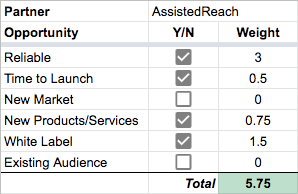

Pitch long-term value, not “quick hit” revenue increases.
This means you need to put in the time to research your target partners, and make sure that what you’re pitching fits within their existing business – and would provide real benefit to them, long-term.
Pro Tip: The easiest way to get your first meeting is to have a qualified opportunity to bring to the table.
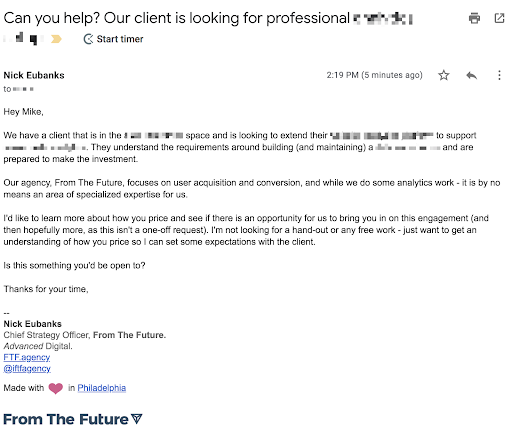

Managing your partners should be a key priority for you as the Agency Owner (or if you’re larger, the sole focus of a Channel or Partnership Manager).
Management here is a mix of tracking, communication, and marketing – all designed to support both partners equally.
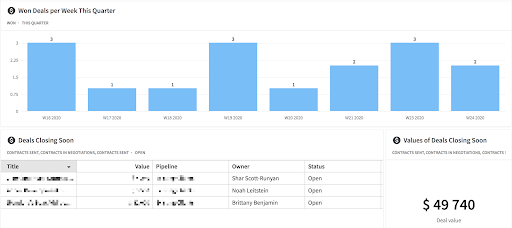
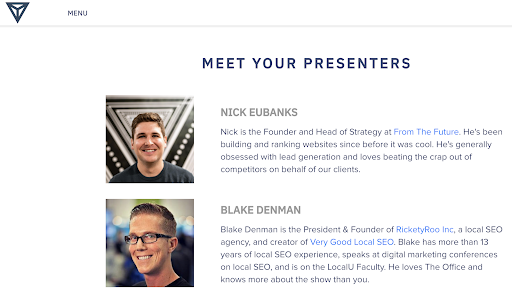


It’s important you understand the why behind investing in building out your partner program.

Rather than selling one product or service to one client, you get to sell multiple products or services to one partner.
You’re indirectly leveraging your partner’s audience and relationships, which results in faster growth for your agency.
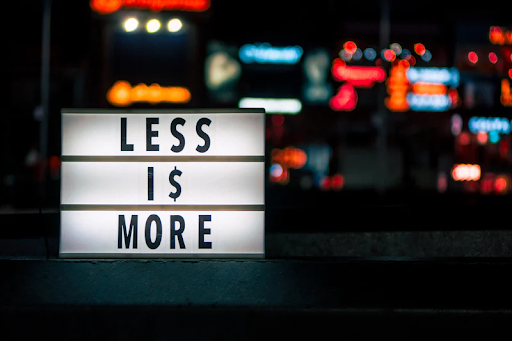
Rather than setting up a full funnel marketing strategy or building a sales team, you can focus on a very specific account-based marketing (ABM) strategy.
The accounts should be potential partners you believe can benefit from your product / service.
The LTV of a partner is much higher than most individual clients, so you don’t have to spend nearly as much time marketing or selling.

Relationship management is a necessary evil.
It’s evil because, at the end of the day, it doesn’t play any part in the results your client’s are paying you for.
With strategic partnerships, you only have to manage the relationships with your partners.
There are certain products and services that are easier to sell as or through a partner.
Additional data or analysis that compliments existing offered products or services, but can be sold stand-alone.Example: WordAgents.
Enrichment of data / existing product or service process via partner offerings.
Example: Assisted Reach.
A product or service you sell on behalf of your Partner, but then your agency is paid to implement / integrate the solution.
Example: WP Engine
Send leads unqualified for your agency that are a great fit for others, where you monetize the opportunity while creating trust and supporting your Partner.
Example: RicketyRoo

In this podcast I catch up with Chase Buckner of Go HighLevel I dive into all sorts of mistakes along my agency journey.
Utilization rates are the key driver to profitability within digital agencies. Yet.. so many agencies don’t put any processes or systems in place to track it (especially those doing less than $5 million in annual revenue).

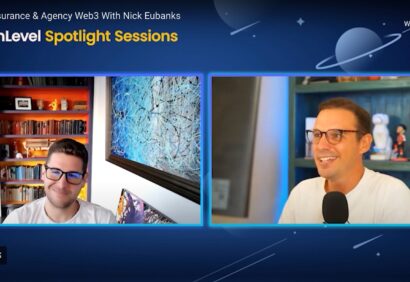
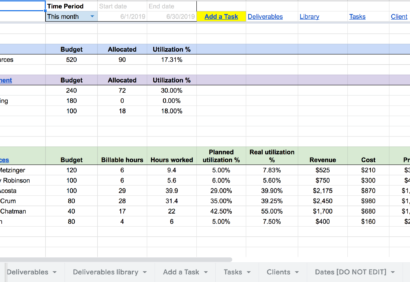
Nice article on Saas Marketing Agency tips !! Thank you.